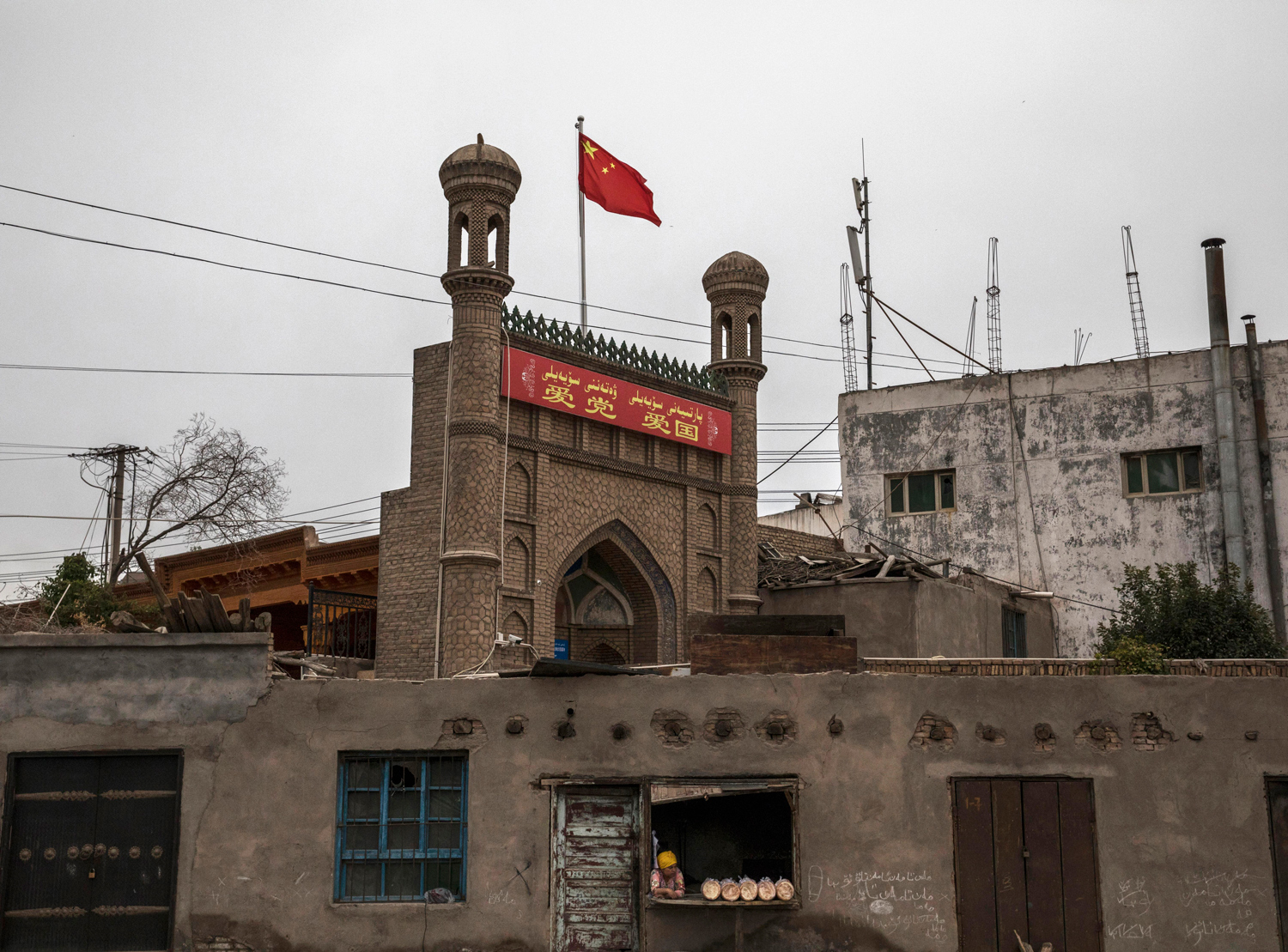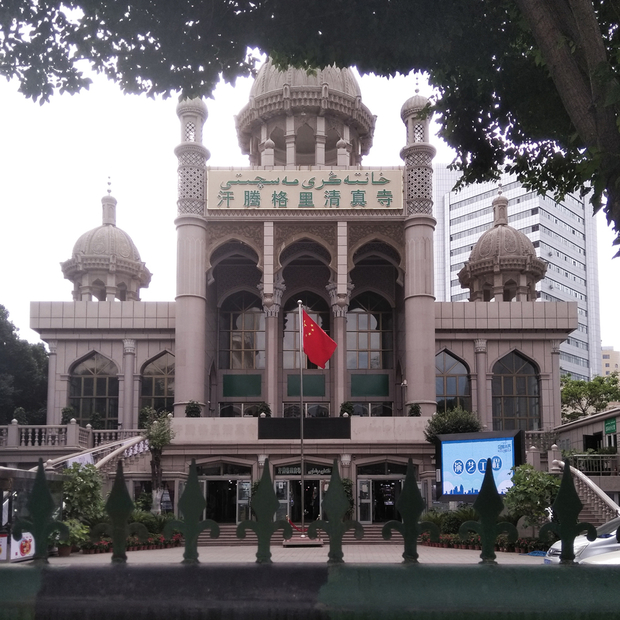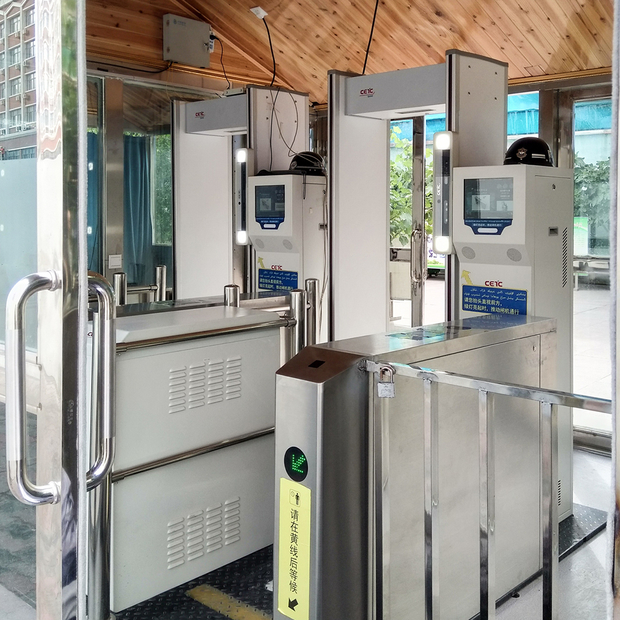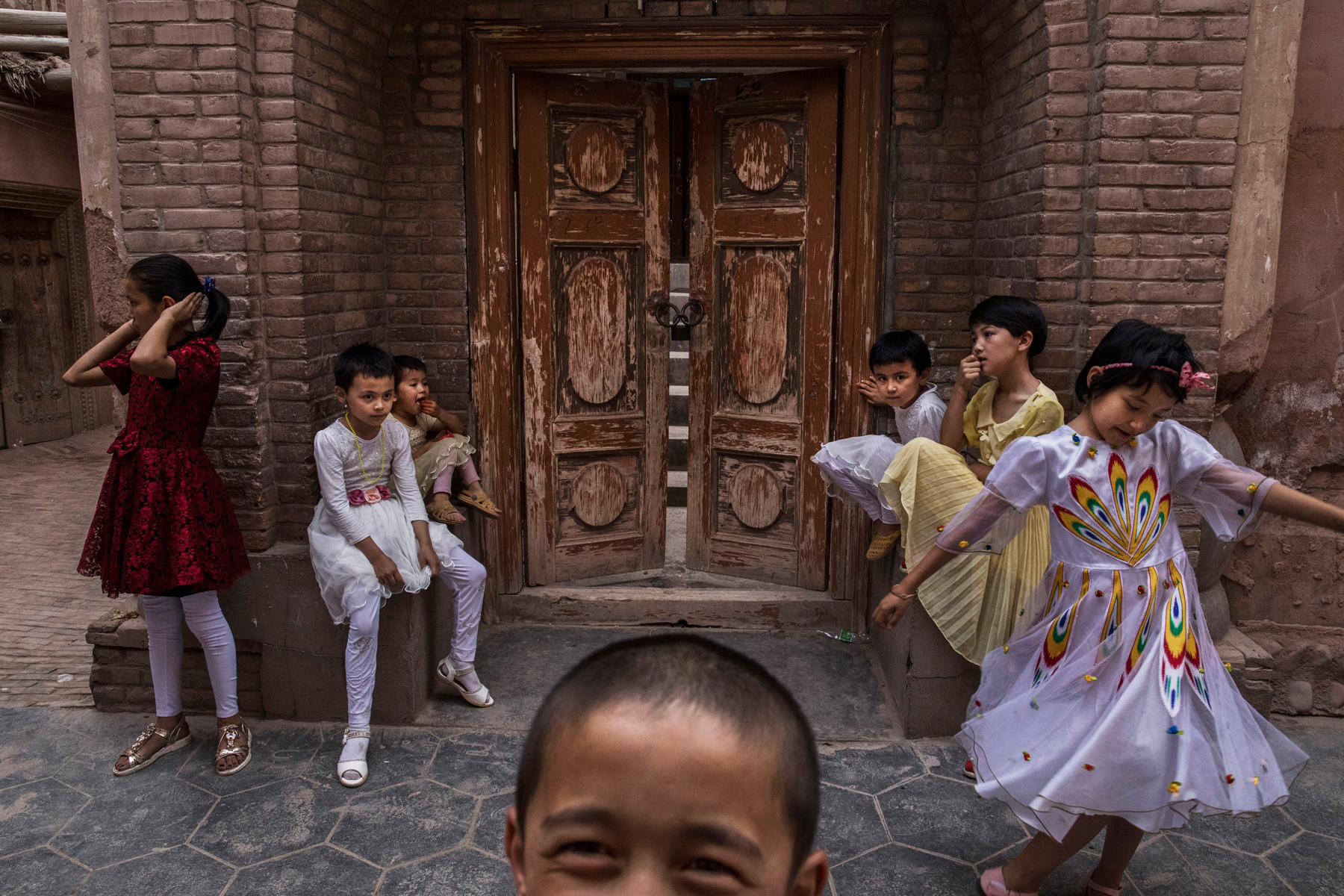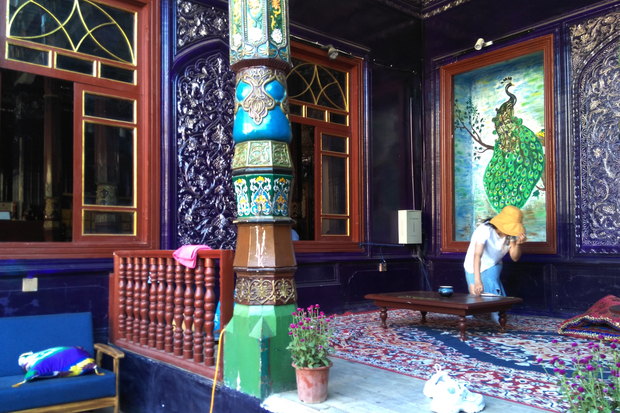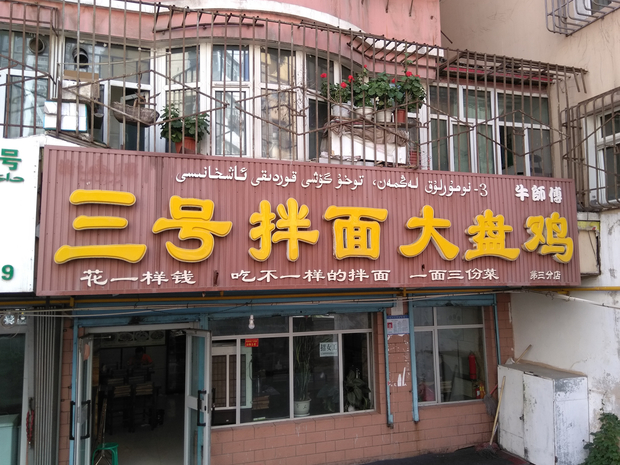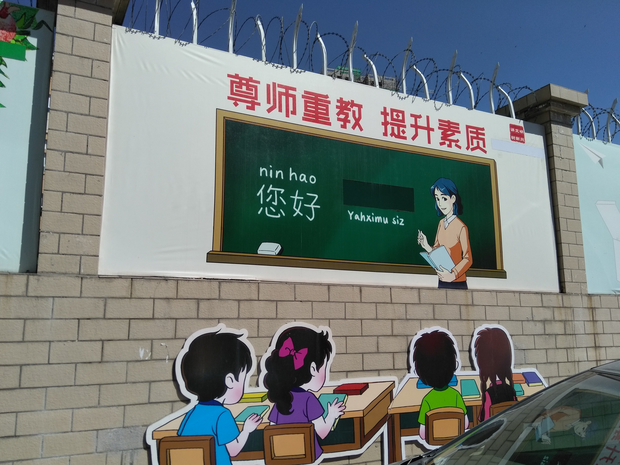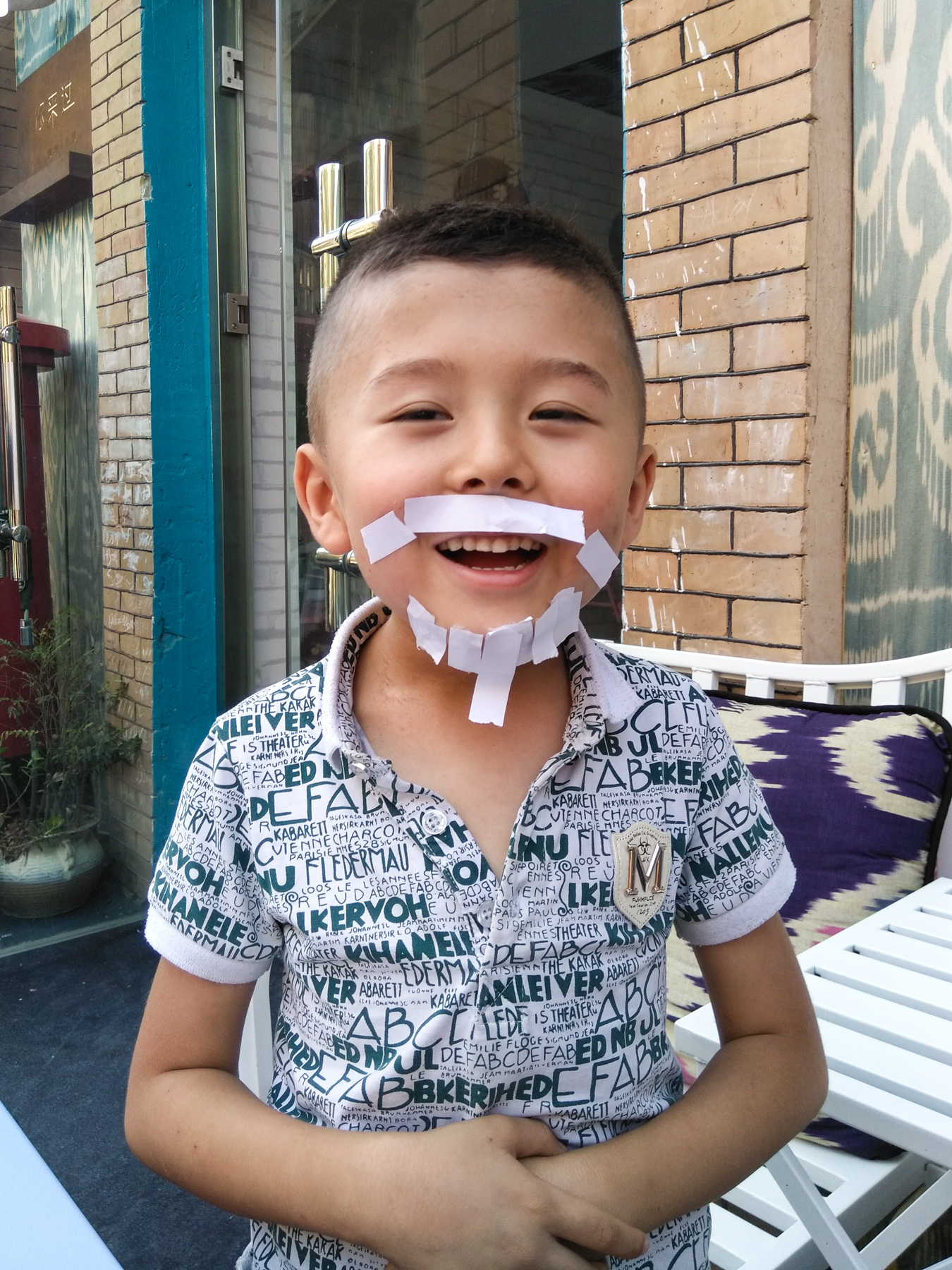In an old Silk Road oasis town on China’s western border, these days a thirsty traveller can knock back a cold beer in a local mosque. The former place of worship is now a bar for tourists. And it is with the customers’ views in mind—and, perhaps, the aspirations of China’s leaders—that the place is called “The Dream of Kashgar.”
For Kashgar’s Uighur residents, however, and for other Muslims across the Chinese region of Xinjiang, that dream is a nightmare. Last summer, when I traveled to Xinjiang, I witnessed the most abject sense of fear and trauma I have encountered in 27 years of researching identity and religion among its Uighur communities. Mosques were deserted and cloaked in razor wire, restaurants were stripped of their halal signage, and local people carefully avoided any expression of religious piety.
By the time I arrived in Xinjiang’s capital of Urumqi in the last week of June, foreign media reports were already widely circulating of a particularly heavy-handed campaign of religious and cultural repression in the region, which Chinese leaders have long sought to control. On top of an escalating series of bans on basic religious practice, Uighur language education, and cultural expression, authorities in Xinjiang were now detaining a million local people in detention camps they euphemistically called “transformation through education centers” in the name of combating religious “extremification.” Xinjiang has long been a contested territory, but the most recent wave of Chinese government efforts to control the region, which has gathered force since a spate of interethnic violence between 2009 and 2015, also involves unprecedented levels of surveillance and government intrusion into daily life.
After months of flatly denying that the existence of its detention camps for Muslim Uighurs and Kazakhs in Xinjiang, the Chinese Communist Party (C.C.P.) recently changed course, moving to legalize the camps. At the same time, it launched a massive counter-propaganda effort against domestic and foreign critics, lauding its anti-halal campaign in Xinjiang, and wheeling out Shohrat Zakir, Chairman and Deputy Party Chief (number two to regional Party Secretary Chen Quanguo) of the Xinjiang Uighur Autonomous Region, who announced that the internment camps have made Uighurs realize “that life can be so colorful.”
A Chinese-language article first posted on Tianshan, an official state media site in Xinjiang, on October 9 tells us much about the Chinese government’s revised position. Illustrated by Cultural Revolution-style images of dramatic skies and beaming farmers holding bushels of wheat, it insists that critics of its Xinjiang policies have got it wrong. According to the anonymous author, a “spontaneous thought liberation movement” is now “cleansing” Xinjiang, “blazing across the prairie,” and enabling the masses to “throw rogue religious extremists into the grave of history.” All sectors of Xinjiang society, it claims, have welcomed this campaign. Women have thrown off their headscarves. Children have been rescued from the “gloom” of religious indoctrination in underground Quranic schools. Elders rejoice as their offspring are snatched back from “the green road of harming others”—for this, read Islamic revival, which in Xinjiang had been largely peaceful until the state cracked down on it. And the youth have “broken the chains of extremist thought,” delighted that faith no longer constitutes an obstacle to free love—here, read intermarriage between Uighurs and Han Chinese, long a social taboo in Uighur communities. All are allegedly “taking back the most basic rights in life” from those “still holding the medieval scriptures.” Despite these successes, the author complains, Western countries are behaving “like anxious shrews, cursing in the streets” or “agitated wild donkeys who can’t sit still,” scrutinizing China’s policies and using concepts like freedom and human rights to “stir up trouble” in Xinjiang.
None of these descriptions reflect anything I saw and heard this summer.
I had come to observe the impacts of the “People’s War on Terror”—which is the Chinese government’s name for what it also calls a campaign of “de-extremification”—on Uighurs’ everyday religious practices. Until the past few years, a local Islamic revival had been underway in Xinjiang. It began in the 1990s, and increasing state controls on religion and culture in the wake of the 2009 Urumqi riots had accelerated it. Paradoxically, the government’s efforts to quell what it perceived as the threat of separatism had only made Uighurs feel more separate, and seemed to make them more pious in both appearance and everyday religious practice, which in turn only alarmed the authorities more. Here is what I saw as I walked around the city of Urumqi.
On my first day in Urumqi, I visited Khantängri mosque. The large forecourt was deserted, apart from the People’s Republic of China (P.R.C.) flag, erected since my last visit in 2016, and a TV screen in the corner running digital anti-extremist slogans. A heavy iron barrier obstructed the entrance, while razor wire coiled in rings over the boundary fences. I asked the middle-aged Uighur security guard who manned the door where the worshippers were. “Retired men are wary of going in the mosque because they’ll have their retirement benefits stopped if they do,” he told me. “Government employees can’t go in because they need to earn money, and the businessmen who used to go in are now too scared.”
Another man who overheard my enquiries silently beckoned me around the corner into a quiet alleyway, then explained about the “problem,” uttering this word in English. “We all want to go in the mosque! But if we do, they will take us to prison. They check our identity cards.”
Far from being freed from “extremist influence,” the 12 mosques I visited over the next three weeks lacked any human presence at all. Eerily empty—apart from the ubiquitous P.R.C. flag—all were covered in razor wire, and entrances were monitored by security guards whose task it was to check ID cards and conduct iris recognition scans on anyone who dared enter.
Many mosques had been partially or wholly de-sanctified. Foreign residents of Urumqi described seeing cranes removing crescents from city mosques one day in the spring, then watching as crescents were put back nine or 10 days later, a development that likely reflected local Party in-fighting as political zeal contended with pragmatic concerns around foreign tourism.
In the demolished-then-refurbished Kashgar “Old Town,” neighborhood mosques were empty, their ornate doors padlocked, their boundaries decked in razor wire. Residents confirmed that the doors had been permanently closed for over a year. Some mosque walls sported framed copies of the “Regulations on De-extremification” adopted on March 29, 2017, or the “Clauses on Work to Improve Ethnic Unity” of May 3, 2016.
Other neighborhood mosques had had their crescents removed. When I asked one local Uighur woman in her 30s what had happened to a missing crescent, she said it had been taken away. Elsewhere, a middle-aged Uighur man nodded in silent affirmation when asked whether the state had removed a crescent. But he declined to say so out loud, mindful of the watchful eyes and ears of the pervasive closed-circuit monitoring system. Such was his anxiety that he denied he had ever entered the mosque, even when permitted to do so.
In another neighborhood of the Kashgar Old Town, an elderly Hui man in a white skull cap (the Hui, also known as “Chinese Muslims,” are descendants of Arab traders and soldiers who arrived in China as Islam expanded East) and his Uighur wife told me their mosque had been closed for some time, and the Quranic school that stood opposite it had been closed for even longer. Both were clearly upset. He said that recently some foreign Muslims had wanted to enter the mosque to pray, then turned to his wife and said, “We had to tell them to go to the Heytgah mosque, didn’t we?” His wife asked what I do, and I said I was a university lecturer. “So, you know about the situation, then?” she asked, before dissolving into quiet tears. I comforted her, squeezing her arm, and saying things would get better. “When,” she asked, “will they get better?”
At the entrance of Kashgar’s famous Heytgah Mosque (also known as Id Kah Mosque), which formerly overflowed with more than 10,000 of the pious every Friday, I was greeted by a Uighur ticket seller, who charged me 45 renminbi, or about U.S.$6.50, for entry; two Han Chinese riot police with riot shields accompanied her. The Arabic-script greeting that once adorned the door lintel had evidently been ripped off, replaced by a propaganda slogan reading “Love the [Chinese Communist] Party, Love the Country.” Such signs had once read: “Love the Country, Love Religion.” Now, religion was denied even a secondary level of popular allegiance.
When I expressed surprise that tourists were admitted and asked when local people were allowed in to pray, the police became immediately threatening, demanding to know my business.
Inside, the mosque felt like a ghostly museum or historical site. There were no worshippers. Before the far prayer hall, I found a banner reading: “Ethnic unity is happiness; Splittism [ethnic separatism] and riot are calamity.” A young Uighur man in a traditional embroidered shirt—but with his head uncovered—deferentially ushered a group of Han Chinese tourists inside. When I questioned the propriety of non-believers entering the prayer hall, he shook his head, and replied, “This is just my job. I wouldn’t know about that.”
As I walked away, the young man got out his phone, and apparently informed the door police there was a potential troublemaker at large, likely to cover his own back. Shortly afterwards, when I approached an older Uighur man watering the plants in the mosque courtyard, he systematically moved away, foot by foot, until finally giving me a firm shake of his head when I said hello. Seconds later, a police officer appeared at about a 25-foot distance and hung around until I moved away.
None of this suggested the “normalization” of “extremist” Islam; rather, it evidenced wholesale coercive secularization and a deliberate campaign of state terror—an intention to eliminate all expression of everyday Islamic practice, however peaceful, and a rising fear in Uighur communities of being seen as religious.
The imprint of coercive secularization was also visible on Uighur bodies through intrusive state controls on religious dress, resulting in a lack of veils and headscarves, and shorter tunic length on women, as well as in an absence of facial hair on men. Back in 2004, as the Islamic revival gathered pace, it had been common to see women, and even young girls, wearing the niqab or hijab in the Uighur district of Urumqi.
As recently as 2016, many young women in Urumqi had donned a turban-style head-covering or a modified version of the hijab, in a nod to global sartorial trends for Muslim women. But the situation was then already worsening in the south. Uighur migrants who had fled to the regional capital from Kashgar told me, “a lot of people down south have been put in prison for very small things, like wearing veils and growing beards.” By this summer, it was rare to see anything but the flimsiest chiffon headscarf in Urumqi, while in Kashgar head coverings were not in evidence at all. Similarly, where Uighur men had earlier worn beards or at least a moustache, all but the elderly were now strangely clean-shaven.
A German student I had met in Kashgar wrote to me from Ghulja in north Xinjiang to recount a conversation held with a Uighur taxi driver. She said she told him that the mosque situation in Xinjiang was very sad. At this, he began to cry, producing an old photo of himself with a moustache. He told her he did not feel he could grow one anymore; that while the practice was not officially forbidden, everyone knew the heavy consequences of doing so.
Images emerged in July, first on social media, then in online news reports, of C.C.P. cadres enforcing secular dress codes by cutting short Uighur women’s dresses in the street. The women in the photographs look humiliated, with some attempting to cover their face before the camera.
In Urumqi, I spoke to many women employed by Muslim catering businesses, where a concerted campaign was underway to “de-extremify” shop-fronts through the systematic removal of halal signage. Here, not only Uighur and Kazakh but also Hui Muslims were affected. Asked how she felt about the ongoing urban “beautification” project in the city’s Tianshan district, a female Hui restaurateur observed carefully: “Our halal sign will not be replaced when the shop gets its new façade; but even if it doesn’t appear up there, I will still have it in my heart.”
In this environment, many Uighur owners had chosen to self-censor when they opened a new restaurant. One told me: “We did not put halal signage in the design plan, but everyone still knows the restaurant is an ethnic restaurant,” and therefore halal.
Other women lamented the state’s assault on Islamic festivals and customs. A young Uighur woman working in an Urumqi store removed us to a safe corner away from the ubiquitous closed-circuit cameras and said, “We don’t have any festivals now. No one even dares to say Assalamu Alaykum,” an Arabic greeting meaning peace be with you. “It’s too religious.”
She complained of how the city’s state-run Xinhua bookstore now carries no books teaching the Uighur script, which is a modified version of the Arabic script, to children. Sure enough, I later found only one box of flashcards with Uighur phonetics on sale there. Meanwhile, outside the barricaded and razor-wired Urumqi No. 1 primary school, the Uighur script had been removed from a poster exhorting Chinese and Uighur children to respect their teachers and “improve their personal quality.” The last time that the modified Arabic script had been banned in Xinjiang was during the Cultural Revolution.
And what of the reactions of Uighur children to the “thought liberation” described as “cleansing the land” in the Tianshan blog post? At this age, most I spoke to remain oblivious to the politically charged environment in which they are growing up, not least because their frightened parents shield their ears from discussions of Uighur language and religion that, if absorbed and adopted, could one day see them branded as extremists.
In Kashgar, I met a six-year-old Uighur boy, who, like all Uighur children, is now required to take most of his school classes in Mandarin Chinese rather than in Uighur, his mother tongue. Having volunteered to sing China’s national song for me in perfect Chinese, he then proceeded to recreate on his face a vanished Uighur cultural norm—the beard—using white sticky labels. Here was a vulnerable young soul pulled, unknowingly, between two contrastive and competing worldviews.
And what really happens to those interned in the camps? Zakir claimed in mid-October that those held because of “religious extremist thought” are given vocational skills and rehabilitated, and they return to their communities, where they proudly support their families through an increased income.
I heard similar rhetoric from Han Chinese residents of Xinjiang, albeit with an Orwellian twist. A Han taxi driver in Urumqi explained, “Detainees are just there to have their thinking changed; then they will come out again.”
Local Uighurs, however, were adamant that the disappeared almost never make it out. A female professional in her 30s in Kashgar confirmed under her breath that next to no one is emerging from the camps, adding that the only ones released are “those who have fallen ill.” In another hushed conversation in Urumqi, a Uighur businessman in his early 40s explained, “Some people were given medicine to change their thinking, medicine for their minds, and it made them ill. Only then were they released.”
These descriptions reflect the Chinese state’s current view of Islam as pathology. In an official C.C.P. audio recording, transmitted in 2017 via WeChat and reported by Radio Free Asia, Uighurs are told: “Members of the public who have been chosen for reeducation have been infected with religious extremism and violent terrorist ideology, and therefore they must seek treatment from a hospital as an inpatient.”
But what the state seeks to cure is not simply religious extremism, nor even religion. It is Uighur—or Muslim—identity more broadly, which it holds directly responsible for what it sees as continued political resistance.
The 2017 “Regulations on De-extremification” purport to combat “penetration” by religious extremists. The aim of “reeducation” in the internment camps is, however, much bigger: to eradicate the Uighur language and Islamic practice, which are represented by the Chinese state as security threats, and castrate Uighur identity for good.
The internment camps and the threat of being disappeared into them are not about “thought liberation.” They are about intimidation—keeping Uighurs in a state of fear. They are an enactment of Han Chinese control and dominance, an aggressive intrusion on the powerless, and a violent destabilisation of personhood. In the final analysis, they are intended to break the will of the Uighur nation.
The signs of the approaching nightmare were there back in 2016. New Xinjiang Party Secretary Chen Quanguo had just transferred in from Tibet, and was expected to substantially deepen already draconian levels of securitization in Xinjiang.
Most striking during my visit in 2016 were my interactions with a longtime friend I will call A. We met first in a public restaurant, then moved to her home. Throughout our conversation in both venues, A baffled me by repeatedly declaring, straight-faced, how good state policies are in Xinjiang. Knowing her previously critical position, I could not help but wonder whether her statements were genuine.
The next time I saw her, A’s partner drove us out of Urumqi. Then, A walked me up a deserted mountain track, far from the city’s audio-visual surveillance network. “I have much in my heart I want to say, but I can’t say any of it,” A told me. “Well, I can say it, but no one must hear it. If the [government’s] policies are fine, then why am I afraid of speaking? Their policies are formed with no prior consultation, then implemented without any warning.”
By this summer—the second year of Chen’s campaign of religious “de-extremification”—the situation had taken a serious turn for the worse. Hundreds of thousands of Uighur and Kazakh Muslims had been “disappeared” into extra-judicial internment camps where authorities ask them to renounce Islam and pledge allegiance to Chinese President Xi Jinping. And all but two of the contacts I had maintained for over two decades were too petrified to see me. As a Uighur teacher in her 30s from Kashgar put it, "We used to chat a lot, we Uighurs. But now we don't talk any more. We are so afraid of saying the wrong thing."
I felt compelled to read George Orwell’s Nineteen Eighty-four when I returned home. The parallels between that masterpiece and a Xinjiang now in the grip of “de-extremification” and “thought liberation” are astonishing. In the book’s final part, the protagonist’s government torturer reveals that the state does not “merely destroy our enemies, we change them. . . [So] long as [the heretic] resists us we never destroy him. We convert him, we capture his inner mind, we reshape him. . . You will be hollow. We shall squeeze you empty, and then we shall fill you with ourselves.”




